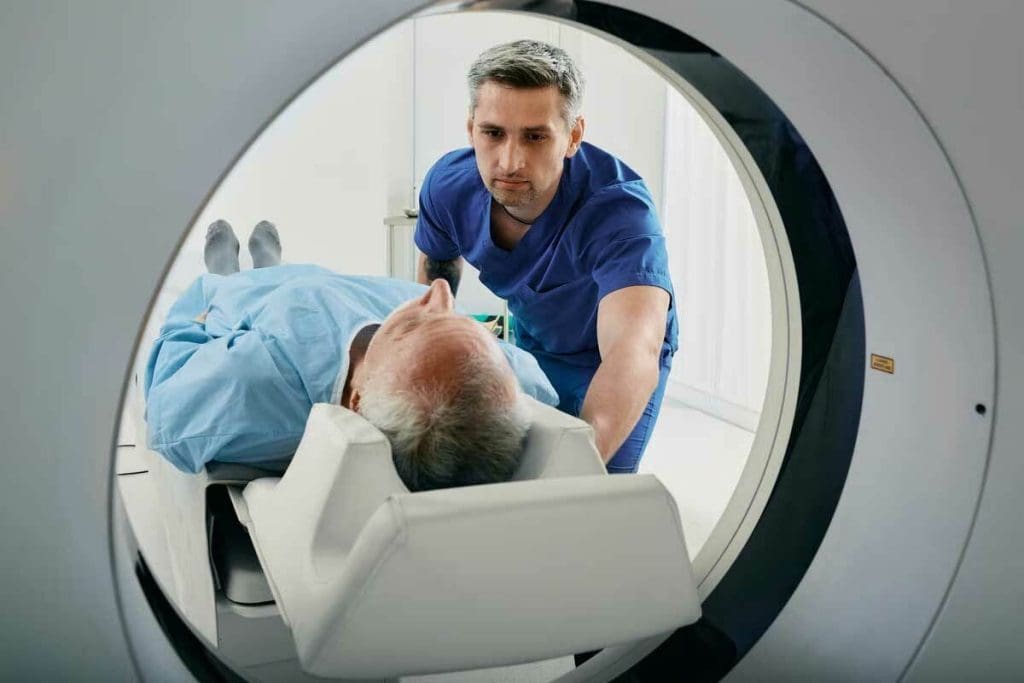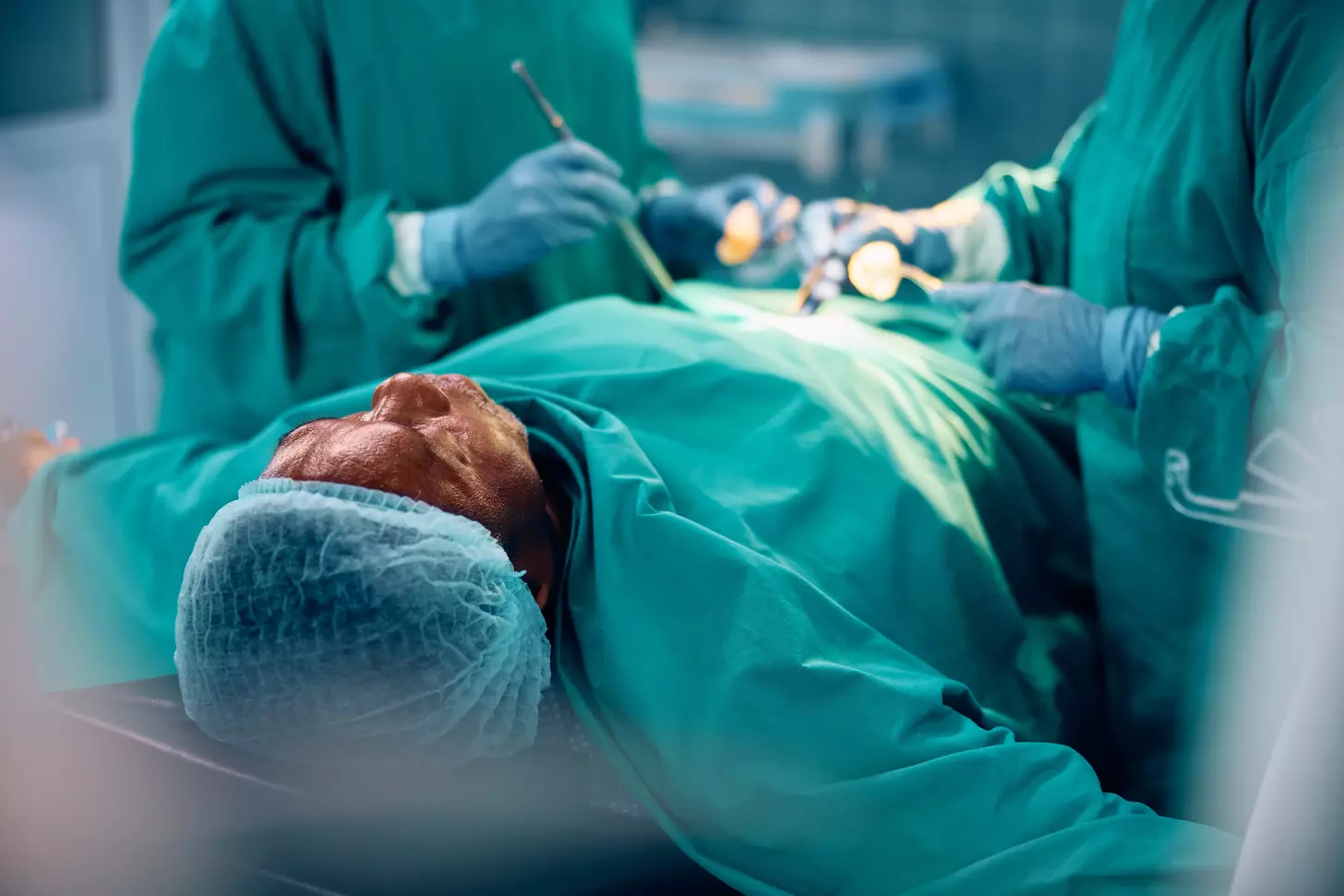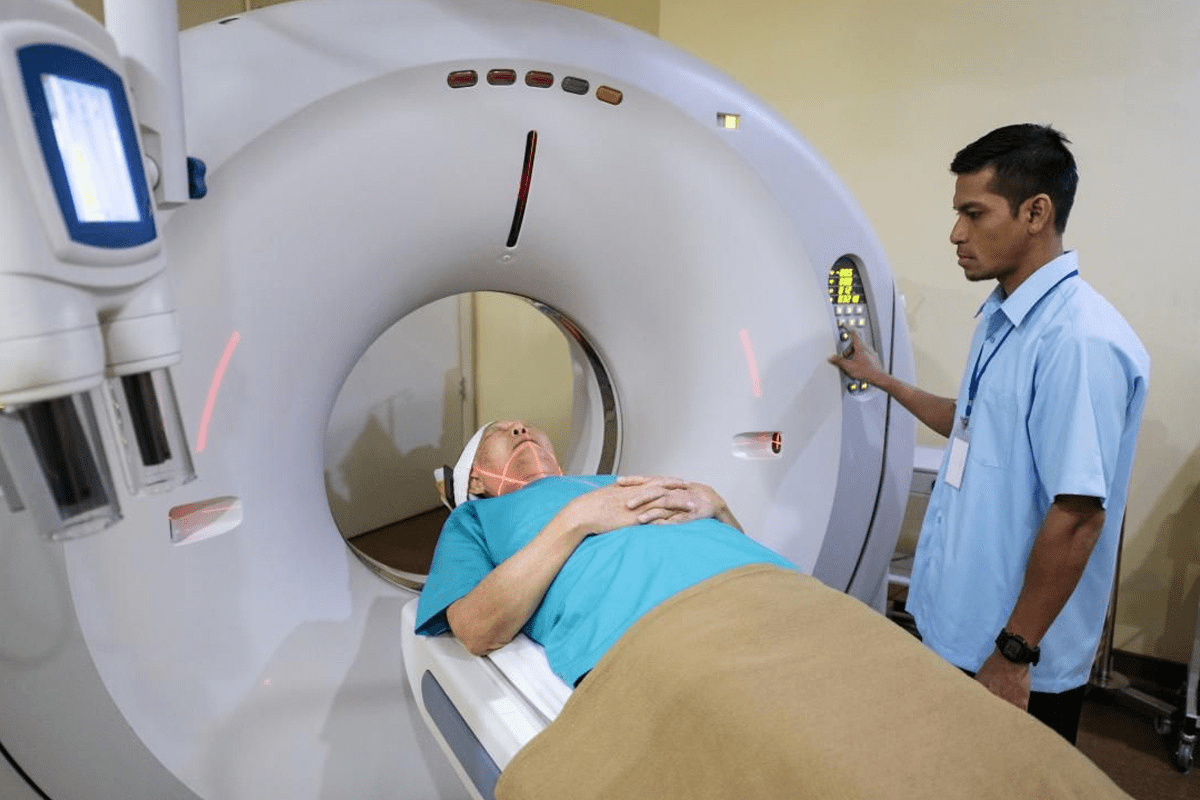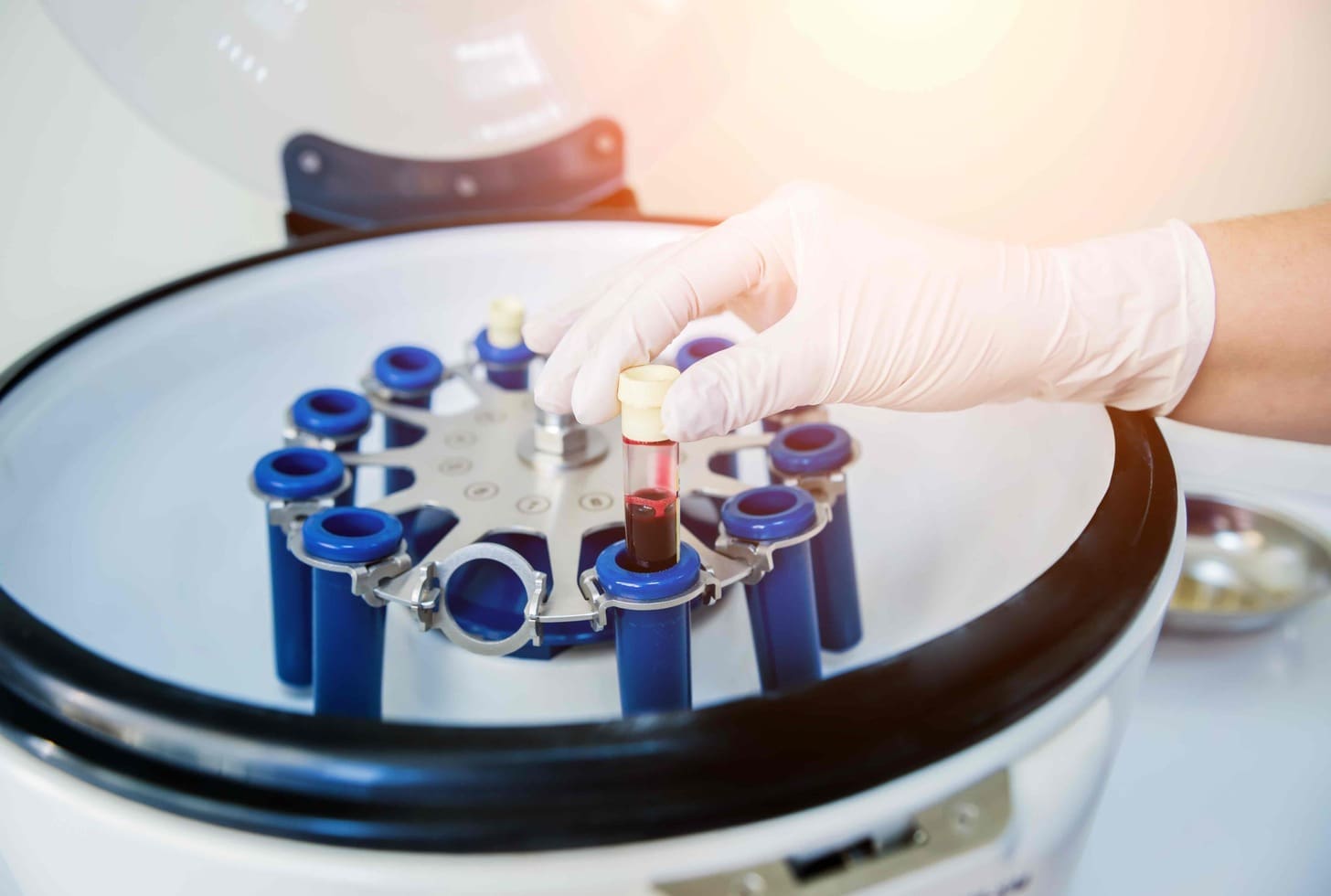Last Updated on November 27, 2025 by Bilal Hasdemir

When a medical emergency happens, time is of the essence. Facing a medical crisis can be scary. The need for a CT scan can make things even more stressful.
Quick access to advanced imaging and testing is key. It helps doctors get clear answers fast. Over the last ten years, CT scans in emergency settings have become very important.
Understanding the role of emergency CT scans is vital. They help provide quick and accurate diagnoses.
Key Takeaways
- CT scans are key in emergency settings for fast diagnosis.
- The use of CT scans has grown a lot over the past decade.
- Advanced imaging helps doctors guide care effectively.
- Knowing about CT scans can help reduce patient anxiety.
- Emergency CT scans offer timely and accurate diagnoses.
Understanding Emergency CT Scans and Their Growing Importance

CT scans are key in emergency care, helping doctors quickly check on patients. It’s important to know why they’re so vital and how they’re different from regular scans.
What Is an Emergency CT Scan?
An emergency CT scan uses X-rays from different angles to create detailed images of the body. These images help doctors see injuries or conditions inside the body that can’t be seen with other tests. This is done using X-rays, a type of radiation.
Emergency CT scans are known for:
- Quick image making
- Clear images
- Seeing complex body parts
- Being used in urgent care
The 60% Rise in Emergency Department Utilization
In the last ten years, CT scans in emergency rooms have gone up by 60%. This increase shows how much doctors rely on CT scans for fast and accurate diagnoses in emergencies.
“The increased use of CT scans in emergency departments reflects the growing need for rapid and accurate diagnostic tools in critical care situations.”
How Emergency CT Scans Differ from Routine Imaging
Emergency CT scans are different from regular scans in a few ways. They’re done quickly, often within 30 minutes of arriving at the emergency room. They also use more detailed imaging to help critically ill or injured patients.
Both patients and doctors need to understand these differences. It shows how emergency CT scans are essential for diagnosing and treating emergencies.
Fact 1: When Is an Emergency CT Scan Medically Necessary?

In critical situations, healthcare professionals rely on CT scans for immediate diagnostic insights. Emergency CT scans are a key tool in medical emergencies. They provide quick and detailed images, helping doctors make fast decisions.
Common Medical Emergencies Requiring CT Imaging
Certain medical conditions need quick diagnosis and treatment. These include strokes, internal bleeding, and severe injuries from trauma. CT scans are very useful in these situations because they give detailed images quickly. This helps doctors understand the extent of the condition.
For example, in suspected stroke cases, a CT scan can tell if it’s an ischemic or hemorrhagic stroke. This guides the treatment. For severe injuries, a CT scan can spot internal injuries that other tests can’t see.
Symptoms That Typically Warrant Immediate Scanning
Symptoms like severe headache, chest pain, abdominal pain, and severe trauma often need immediate CT scanning. These symptoms can show life-threatening conditions that need quick diagnosis and treatment.
For instance, a patient with severe abdominal pain might get a CT scan for appendicitis, gallstones, or other issues. A patient with chest pain might get a CT scan to check for pulmonary embolism or aortic dissection.
How Physicians Determine Scan Necessity
Doctors decide if a CT scan is needed based on symptoms, medical history, and initial assessments. They consider the scan’s benefits against risks like radiation exposure to make a decision.
The decision-making involves clinical judgment and sometimes specialist advice. In trauma cases, the emergency team might quickly decide on a CT scan based on injury severity and patient condition.
Fact 2: The Critical Time Factor in Emergency CT Scans
In emergency medicine, how fast a CT scan is done can be life-saving. Every minute is critical. Timely diagnosis is key, and CT scans are essential in this process.
The 30-Minute Standard Protocol
Emergency departments have a quick CT scan protocol. The American College of Radiology suggests CT scans should be done in 30 minutes. This 30-minute goal is a standard for many emergency departments, helping patients get quick diagnoses and treatment.
Actual Median Times for Different Patient Groups
Studies show that CT scans are done within 30 minutes for adults and the elderly. For example, a study found that adults’ CT scans took about 25 minutes from order to scan. This speed comes from efficient processes and special emergency CT scanners.
Why Timing Matters in Emergency Situations
Quick CT scans are vital because they affect patient outcomes. Fast diagnosis leads to better and quicker treatment, improving survival chances and reducing complications. In trauma, a quick CT scan can mean the difference between life and death.
In summary, the time factor in emergency CT scans is critical in emergency medicine. By understanding the need for quick CT scans and following the 30-minute standard, we can ensure patients get the best care in emergencies.
Fact 3: What to Expect During an Emergency CT Scan Procedure
The emergency CT scan procedure is quick but has several important steps. Knowing these can help you prepare better.
Step-by-Step Process of the Emergency CT Scan
When you arrive for your emergency CT scan, you’ll go to the radiology department. First, you’ll get ready, which might mean changing into a hospital gown. You’ll also remove any metal objects or jewelry that could get in the way of the scan.
Key steps in the CT scan process include:
- Positioning on the CT scan table
- Administration of contrast dye (if necessary)
- The actual scanning process, which usually takes only a few minutes
During the scan, you’ll need to stay very quiet and might be asked to hold your breath. This helps get clear images.
Contrast Dye: When It’s Used and What to Know
Contrast dye is used to make CT scan images better. It’s great for showing blood vessels, organs, and other body structures.
Important points about contrast dye include:
- It’s not used for all CT scans, but it is common in emergencies
- It’s usually given through an IV line
- Some people might feel a warm sensation or nausea
Communication with Medical Staff During the Procedure
Talking to medical staff is key during an emergency CT scan. Let them know if you’re uncomfortable or have any allergies.
Key aspects of communication include:
- Tell staff if you’re feeling anxious or uncomfortable
- Let them know about any allergies, like as iodine or contrast dye
- Follow the instructions from the radiology team
Duration and Positioning Requirements
An emergency CT scan is usually very short, lasting just a few minutes. You’ll need to stay very quiet and not move on the CT scan table.
Key points to remember:
- The scan is usually done in 5-10 minutes
- You might be asked to hold your breath or stay very quiet
- The CT scan table will move through the scanner, making sounds
Understanding these parts of the emergency CT scan can help you feel more ready. It can make the experience less stressful and smoother.
Fact 4: Radiation Exposure and Safety Considerations
Emergency CT scans are vital but carry the risk of radiation exposure. It’s key to balance their benefits with long-term risks. This ensures safety in medical emergencies.
Understanding Radiation Doses in CT Scans
CT scans use X-rays to see inside the body. The radiation dose depends on the scan type and body part. Typical doses are 2 to 10 millisieverts (mSv), similar to natural background radiation over the years. We must weigh these doses when deciding on CT scans for patients.
The Cancer Risk Factor: Examining the 5% Statistic
Some studies link CT scans to up to 5% of all cancer cases each year in the U.S. A study by the University of California, San Francisco, points out these risks.
How Hospitals Minimize Unnecessary Radiation Exposure
Hospitals are working to reduce radiation. They use low-dose CT scans for kids and when detail isn’t needed. They also focus on justifying each scan to ensure benefits outweigh risks.
Balancing Immediate Benefits Against Long-term Risks
In emergencies, CT scans’ benefits often outweigh risks. But healthcare providers must consider each patient’s situation. By optimizing scans and exploring alternatives, we can reduce radiation while keeping care quality high.
Fact 5: Types of Emergency CT Scans for Trauma Diagnosis
Emergency CT scans are made for different medical needs. They help doctors figure out what’s wrong quickly. This shows how important CT scans are in emergency care.
Head CT Scans for Neurological Emergencies
Head CT scans are key for brain emergencies like strokes and brain injuries. Liv Hospital does these scans fast to see how bad the injury is. This helps doctors decide what to do next.
“Time is brain” in neurological emergencies, meaning quick action is vital. These scans give doctors the info they need to save lives.
Chest and Abdominal CT Scans
Chest and abdominal CT scans check for injuries in these areas. They help find bleeding and organ damage. Contrast dye makes these scans better for spotting problems.
These scans are great for finding all injuries in trauma cases. They let doctors see what needs the most help first.
Full-Body CT Scans for Trauma Patients
Full-body CT scans are used for severe trauma. They check the whole body for injuries. This helps doctors catch all problems fast.
“The use of full-body CT scans in trauma care represents a significant advancement in emergency medicine, enabling healthcare providers to make informed decisions rapidly.”
Specialized Emergency Imaging Protocols
There are special imaging plans for emergencies. These plans make images better and use less radiation. They follow rules from places like Liv Hospital.
Creating these plans shows how emergency care is getting better. It’s all thanks to new imaging methods.
Fact 6: How Emergency Departments Optimize CT Scan Workflow
Emergency departments work hard to make CT scans fast and effective. They aim to cut down waiting times and improve care. This is key for patients in urgent need.
Dedicated Emergency CT Scanners
Emergency departments use special CT scanners for urgent cases. These scanners are always ready for emergencies. This makes sure patients get the scans they need quickly.
- Reduced Waiting Times: With dedicated scanners, patients don’t wait as long for CT scans.
- Improved Patient Care: Quick access to CT scans helps doctors make fast diagnoses and treatments.
Patient Transportation and Prioritization Systems
Fast and safe transport to the CT scanner is essential. So is a system to prioritize patients. This ensures the most urgent cases are seen first.
Efficient transportation systems cut down on travel time. Prioritization protocols mean critical cases get scanned right away.
Integration with Other Emergency Care Processes
CT scans must work smoothly with other emergency services. Good communication between teams is key. This makes care more efficient.
“The integration of CT scanning with other diagnostic and therapeutic processes enhances the overall efficiency of emergency care.”
Emergency Medicine Specialist says
International Standards and Academic Protocols
Following global standards and research-based guidelines is important. These ensure CT scans are done right and meet international quality levels.
By following these standards, emergency departments can offer top-notch care. Their CT scan workflows will be both efficient and of the highest quality.
Fact 7: What Happens After Your Emergency CT Scan
After your emergency CT scan, our team will look at the results with you. This is key to figuring out your next steps in care and treatment.
How Results Are Interpreted and Communicated
Our radiologists will study the images from your CT scan. They use the latest tech for accurate diagnoses. Then, they’ll share the findings with you and your doctor, making sure you understand.
When Additional Imaging Might Be Needed
At times, more tests or scans are needed for a full picture of your health. This choice is based on your CT scan results and medical history.
Our team will talk to you about any extra tests. They want to make sure you know what’s happening with your care.
Follow-up Care Based on CT Findings
The CT scan results will shape your follow-up care. This might include treatments, meds, or more tests. Our team will help you recover smoothly.
Accessing Your Medical Records and Images
You can get your medical records and CT scan images. We’ll help you get the info you need.
Patient Rights and Questions to Ask About Your Emergency CT Scan
When you need an emergency CT scan, knowing your rights is key. You have the right to know about your care. This includes understanding the emergency CT scan procedure.
Understanding Your Right to Information
Patients have the right to know about their treatment. This includes the risks and benefits of an emergency CT scan. Knowing this helps you take a more active role in your care.
Key information to understand includes:
- The reason for the emergency CT scan
- The use of contrast dye, if applicable
- Potential risks and benefits
- How the results will be communicated
Questions to Ask Before and After the Procedure
Before the scan, ask important questions. Find out about the procedure, risks, and what it entails. After, ask about your results, what they mean, and any follow-up care.
Example questions to ask include:
- Why is an emergency CT scan necessary for my condition?
- How will the scan be performed, and what can I expect?
- Are there any risks associated with the scan, such as radiation exposure?
- How and when will I receive my scan results?
- What are the next steps based on the scan findings?
When to Consider Seeking a Second Opinion
In some cases, getting a second opinion on your CT scan results is wise. This might be if you’re unsure about the diagnosis or treatment plan. Talk to your healthcare provider about your concerns.
“Patients should feel empowered to seek additional information or opinions regarding their care. A second opinion can provide reassurance or alternative perspectives on treatment options.”
Knowing your rights and being involved in your care can improve your health. We support you from diagnosis to treatment and follow-up.
Conclusion: Being Prepared for an Emergency CT Scan
Knowing what to expect from a CT scan can make you feel less anxious. It can also improve your health outcomes. An emergency CT scan is a key tool in many medical emergencies. Being informed about the process and care after can boost your confidence during emergency care.
Understanding the steps of an emergency CT scan can ease your worries. From the start to the end, each step is important for your care. Our talk on emergency imaging shows how fast and accurate diagnoses are key in emergencies.
As a patient, knowing your rights and making informed decisions is essential. We hope this article has given you useful insights into emergency CT scans. It should help you be more involved in your healthcare.
FAQ
What is an emergency CT scan, and how does it differ from a routine CT scan?
An emergency CT scan is a quick imaging test for urgent cases. It’s used to diagnose injuries or conditions that need quick attention. Unlike routine CT scans, it’s faster and more urgent, with a focus on immediate care.
When is an emergency CT scan medically necessary?
You might need an emergency CT scan for severe injuries or sudden symptoms. This includes head trauma, severe stomach pain, or suspected internal injuries. It’s used when other tests don’t give clear answers.
What are the common medical emergencies that require CT imaging?
CT scans are often needed for stroke, severe head injuries, internal bleeding, and sudden stomach problems. They help find the cause fast, so treatment can start right away.
How long does an emergency CT scan typically take?
The scan itself takes just a few minutes. But getting ready and positioned can add time. Overall, it usually takes 15 to 30 minutes from start to finish.
What are the risks associated with emergency CT scans?
The main risk is radiation exposure. Though low, it’s something doctors consider. They weigh it against the scan’s benefits, which are often critical in emergencies.
How do hospitals minimize radiation exposure during CT scans?
Hospitals use the least amount of radiation needed. They also use new tech to cut exposure and follow strict rules for scans and image quality.
Can I refuse a CT scan if I’m concerned about radiation exposure?
Yes, you can refuse a CT scan if you’re worried about radiation. But in emergencies, the scan’s benefits often outweigh the risks. Doctors will talk to you about this.
What happens after my emergency CT scan?
After the scan, a radiologist looks at the images. Then, your healthcare team gets the results. You might get treatment right away, be watched, or need more tests or follow-up care.
How can I access my CT scan images and medical records?
You usually have the right to see your medical records, including CT scan images. Ask your doctor how to get them. This might be through digital platforms or formal requests.
What questions should I ask before undergoing an emergency CT scan?
Before a CT scan, ask about its need, risks, preparation, and what to expect. Also, find out how you’ll get the results.
When should I consider seeking a second opinion regarding my CT scan results?
Get a second opinion if you’re unsure about your diagnosis or treatment. If you’re not okay with the first scan’s results, talk to your doctor. They can help you decide what to do next.
References
- National Library of Medicine. (2023). CT Scan – StatPearls. https://www.ncbi.nlm.nih.gov/books/NBK567796/






